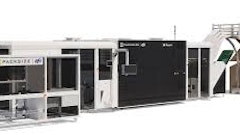
The last choice a shopper makes before clicking "purchase" is the shipping method. Get that screen wrong and they vanish. Case in point: 48% of U.S. adults have bailed on a cart because the extra costs (mostly shipping) felt too high.
From that point forward, tracking email, carrier texts, the moment the driver rings the doorbell – every touchpoint is tied to the option shown on that one drop-down menu. Messy inputs there cascade into on time-in full (OTIF) failures, returns, and angry support tickets.
Why the pain persists
● Inventory whiplash. A SKU shows “in stock,” yet ships three zones away because the nearest node was oversold.
● Complex freight math. A 120-pound treadmill needs an LTL rate with residential lift-gate, calculated in real time—not tacked onto a follow-up invoice.
● Tariff snap-backs. This is especially a pain point; things are changing rapidly.
Tariffs didn’t create these headaches; they simply pile more friction onto shoppers. Your antidote is radical transparency. In other words, show buyers the exact shipping cost and, crucially, why it adds up to that number. Leave nothing to the imagination.
So, what does radical transparency at checkout look like?
- Expose the math. Break out base freight, fuel, lift-gate, duty—even carbon offset. Sticker shock fades when shoppers see and understand the calculation.
- Pick the right node instantly. A real-time rules engine selects the closest warehouse with stock, balancing margin and SLA.
- Stream tariffs live. If the duty on lithium batteries jumps at 9 a.m., the surcharge appears in the quote by 9:05 a.m.—no frantic spreadsheets.
- Swap modes for special SKUs. A treadmill triggers LTL with lift-gate.
When you put the math up front, here’s what the numbers look like:
● Carts abandoned for “unexpected costs” fall from 48% to the low-30s once fees are decoded.
● Split shipments drop below 10% as node optimization kicks in, slicing freight miles and handling time.
● “Where’s my order?” tickets plunge after tariff swings because shoppers saw duty, service level, and ETA before they clicked purchase.
● Pick-and-pack cycles shrink by minutes when enriched order data flows straight into WMS and label print.
Fun fact: OTIF answers one simple question—Did the customer receive exactly what they ordered, when we promised? Miss it and retailers fine suppliers 3% of the cost of goods. Smart checkout raises OTIF automatically by preventing over-promising at the cart.
Consumers are voting with their wallets
● 86% of shoppers define “fast” as two days or less, and 63% will switch retailers if they can’t get it.
● 58% have paid extra for speed, a 53% jump since pre-pandemic times.
● Yet 81% still say free shipping is their top priority, making transparency on fees non-negotiable.
Transparent checkout lets you thread that needle: surface the true cost, highlight free-ship thresholds, and let buyers choose between “free and slower” or “fast and fair-priced.”
4 steps to make it happen
- Wire in live data. Connect the rules engine to inventory, carrier, and duty APIs; cache rates so an outage doesn’t kill conversions.
- Audit product data. Inaccurate DIM weights or HS codes blow up transparency faster than any tariff hike.
- Start with guardrails. Launch one high-impact rule—“always ship from the closest node”—then layer in tariffs, perishables, and carbon logic.
- Measure what matters. Track abandonment, margin per shipment, and, yes, OTIF on an always-visible dashboard.
The take-home
Tariffs, oversize freight and perishables; these are just variables in an equation. When checkout surfaces exactly what each variable costs and routes the order the smart way, shipping flips from the No. 1 cart killer to a trust builder. Shoppers click "purchase" with eyes wide open, and your supply chain hums instead of firefighting.
Ready to turn that last-mile decision into your competitive edge? Put the math on the screen, let transparency do the selling, and watch OTIF and customer loyalty climb.
















![Pros To Know 2026 [color]](https://img.sdcexec.com/mindful/acbm/workspaces/default/uploads/2025/08/prostoknow-2026-color.mduFvhpgMk.png?ar=16%3A9&auto=format%2Ccompress&bg=fff&fill-color=fff&fit=fill&h=135&q=70&w=240)



